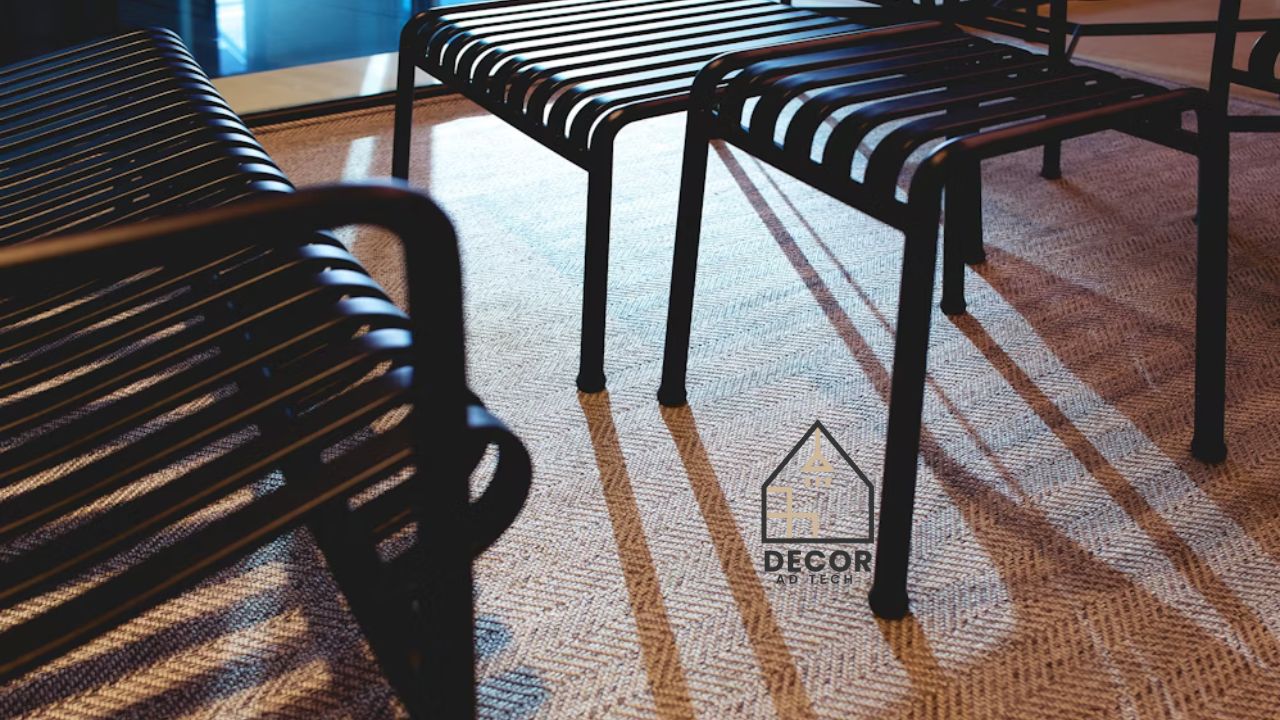Every homeowner knows that sinking feeling—the screech of a chair leg dragged across a beautiful floor, leaving behind a tell-tale scratch. The simplest solution to this common problem is a set of durable chair leg floor protectors. These small but mighty accessories are the unsung heroes of home maintenance, silently guarding your floors against daily wear and tear.
Whether you have gleaming hardwood, elegant tile, or cozy carpet, the constant movement of furniture can cause irreversible damage. From a busy kitchen to a home office with a rolling chair, investing in the right chair floor protector is one of the smartest decisions you can make. This guide will walk you through everything you need to know to choose the perfect protectors and keep your floors looking flawless.
Top Chair Leg Floor Protectors: A Quick Guide
To help you get started, here is a summary table of some of the best-rated options for various needs and floor types.
| Product Name | Material | Best For | Average Rating | Price Range |
|---|---|---|---|---|
| X-Protector Felt Pads | Self-Adhesive Felt | Hardwood, Laminate | 4.7/5 | $ |
| Anwenk Silicone Caps | Silicone & Felt | All Hard Floors | 4.6/5 | $ |
| GorillaFelt Screw-In Glides | Felt & Plastic | Wooden Chair Legs | 4.5/5 | $ |
| Resilia Office Chair Mat | PVC/Polycarbonate | Carpet & Hard Floors | 4.4/5 | $$ |
| Smart-Surface Rubber Tips | Rubber | Tile, Concrete | 4.3/5 | $ |
The Indisputable Value of Protecting Your Floors
Using floor protectors for chair legs is about more than just preventing a few scratches. It’s a comprehensive strategy for maintaining the beauty, integrity, and value of your home’s flooring.
Why You Can’t Afford to Ignore Them
The benefits are immediate and long-lasting, making chair leg floor protectors an essential household item.
- Eliminate Unsightly Scratches: This is the primary reason people seek out these products. A good set of chair leg protectors for hardwood floors ensures that daily use doesn’t leave a permanent mark on your beautiful wood finish.
- Silence Annoying Noise: That awful scraping sound of a chair on a hard surface can be incredibly jarring. Felt chair leg floor protectors or rubber tips absorb sound, leading to a much quieter and more peaceful home environment.
- Prevent Dents and Gouges: The concentrated weight on a single chair leg can create dents in softer flooring like vinyl, linoleum, or even some types of wood. A quality floor protector for your chair distributes this pressure more evenly.
- Preserve Your Floor’s Lifespan: By mitigating daily damage, you extend the life of your flooring. This can save you thousands of dollars in potential refinishing or replacement costs down the line.
- Enhance Chair Movement: The right protectors can make chairs easier to move. This is especially true for an office chair floor protector for carpet, which allows a rolling chair to glide smoothly instead of getting stuck.
A Real-World Scenario
“I was so proud of our new dark hardwood floors, but I was terrified of ruining them,” shares David K., a recent homeowner. “My kids are constantly dragging the dining chairs. I found some slip on chair leg floor protectors online, and the relief was instant. They fit snugly, the chairs move silently, and my floors are completely scratch-free after a year of heavy use. Best few dollars I’ve ever spent.”
Finding Your Perfect Match: Types of Chair Leg Protectors
The market is filled with options, from simple adhesive pads to sophisticated slip-on sleeves. The best chair leg floor protectors for you will depend on your chair’s design, your floor type, and how much use the chairs get.
Felt Protectors: The Classic Choice
Felt is a tried-and-true material, beloved for its soft touch and smooth glide on hard surfaces. It’s a fantastic choice for chair protectors for hardwood floors.
- Self-Adhesive Felt Pads: These are the most common type. They are affordable, easy to find, and simple to apply. You just peel and stick. The main downside is that the adhesive can wear out, and they tend to attract dust and pet hair, requiring occasional replacement.
- Nail-In or Screw-In Felt Glides: For a more permanent solution, these nail on chair leg floor protectors attach directly to wooden legs. They are incredibly secure and won’t fall off, making them ideal for heavy-use chairs.
- User Review: “The Gorilla Felt chair leg floor protectors are a serious upgrade from the cheap stick-on kind. I screwed them into my dining chairs months ago, and they are still holding strong. They glide like a dream on my laminate floors.” – Rating: 4.8/5
Silicone and Rubber Protectors: The Flexible Defenders
Silicone chair leg floor protectors are cup-like sleeves that stretch to fit snugly over chair legs of various shapes and sizes, including square or rectangular ones.
- Silicone Caps with Felt Pads: These are arguably the best chair leg protectors for wood floors. They combine a secure, non-slip silicone grip on the leg with a soft felt bottom to protect the floor. Many are clear, making them nearly invisible.
- Rubber Tips: These are excellent for grip. They prevent chairs from sliding on slick surfaces like polished tile or concrete and are great for chair leg protectors for tile floors. They also provide fantastic noise reduction.
Plastic Protectors: The Heavy-Duty Options
Plastic is all about durability and is used for both individual leg tips and large floor mats.
- Plastic Caps: These hard caps are ideal for protecting the chair leg itself, especially on rough surfaces like patios or concrete. They are often used as metal chair leg floor protectors. However, they aren’t the best for delicate indoor floors.
- Office Chair Mats: A floor protector for an office chair is a non-negotiable accessory in any workspace. These mats, made of clear PVC or ultra-durable polycarbonate, create a smooth runway for caster wheels. This prevents a rolling chair floor protector from damaging carpet fibers or scratching a wood floor desk chair protector.
An Important Note on Office Mats
When buying an office chair floor protector, you must match it to your floor. A mat for carpet has little cleats on the bottom to hold it in place, while a hardwood floor protector for an office chair has a smooth, non-slip backing. Using the wrong one will cause it to slide or fail to protect the floor.
A Floor-by-Floor Guide to Protection
Let’s break down the best choices for the most common types of flooring in a home.
For Hardwood, Laminate, and Wooden Floors
The number one goal is scratch prevention.
- Top Recommendation: Felt chair leg floor protectors are the gold standard. They provide a soft, scratch-free buffer.
- Excellent Alternative: Silicone chair leg protectors for hardwood floors that include a built-in felt pad offer a secure fit and great protection.
- What to Avoid: Hard, bare plastic or metal caps can cause scratches and scuffs on the floor’s finish.
For Tile, Stone, and Concrete Floors
Here, you want to reduce noise and prevent scuffs on the hard surface.
- Top Recommendation: Rubber or silicone chair leg floor protectors offer superior grip and sound dampening.
- Excellent Alternative: Thick, high-density felt pads also work very well. Make sure the bottoms of the protectors are kept clean, as trapped debris can scratch tile.
For Vinyl, Cork, and Linoleum Floors
These softer floors are susceptible to permanent dents and tears.
- Top Recommendation: Use protectors with a wide, flat base to distribute the chair’s weight. Felt floor protectors for chair legs or soft rubber tips are ideal.
- What to Avoid: Avoid narrow, hard protectors that can concentrate pressure and leave lasting indentations.
For Carpeted Floors
Mobility is the main challenge on carpet, as chair legs can snag and drag.
- Top Recommendation: For stationary furniture like dining chairs, smooth plastic glides (often sold as chair leg protectors for carpet floors) are best.
- For Office Chairs: An office chair floor protector for carpet is essential. It provides a firm, smooth surface for wheels, preventing damage and making movement much easier.
How to Select and Install Protectors Correctly
Taking a moment to choose and install your chair legs floor protectors properly will ensure they work effectively.
- Measure Twice, Buy Once: Use a ruler to find the exact dimensions of your chair legs. For round legs, you need the diameter. For square or rectangular chair leg floor protectors, you need the length and width. Products come in specific sizes, like 1 inch square chair leg floor protectors, so guessing is not an option.
- Account for Shape and Angle: Straight legs are easy, but if your chair has angled legs, you need a flexible protector like a silicone cap or a swivel glide that can sit flat on the floor.
- Read the Reviews: Check customer reviews on sites like Amazon for chair leg floor protectors to see how they perform on floors and chairs similar to yours.
Quick Installation Tips
- Adhesive Pads: First, clean the bottom of the leg with rubbing alcohol to remove any grease or dirt. Let it dry completely, then peel and stick the pad, pressing firmly.
- Slip-On Caps: These are the easiest. Just stretch the silicone chair floor protectors and slide them onto the leg, making sure they are pushed all the way on for a secure fit.
- Screw-In/Nail-In Glides: To prevent splitting wood, pre-drill a small pilot hole before installing a screw-in protector. For nail-in types, use a rubber mallet to gently tap it into place.
Frequently Asked Questions (FAQs)
Your Floors Are Worth Protecting
Your home’s floors are a significant investment and a central part of its charm. Taking the small, simple step of outfitting your furniture with the right chair leg floor protectors is one of the easiest and most effective ways to preserve that investment. You can eliminate the stress of scratches, quiet the noise of moving chairs, and ensure your floors remain beautiful for years.
From a desk chair floor protector in your office to dining chair floor protectors in the kitchen, a perfect solution is available. Don’t wait until the damage is done.
Admin Recommendation
How to Upgrade My Home Decoradtech
Decoradtech Smart Home Ideas by DecoratorAdvice
DecorAdTech Smart Home Ideas by DecoratorAdvice











